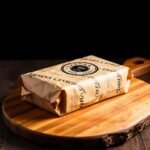Mylar Bags vs Vacuum Sealing: Which is Better for Food Storage?
Preserving food isn’t just about longevity; it’s about maintaining flavor, texture, and nourishment. Whether you’re a seasoned prepper, a dedicated foodie, or someone preparing for unexpected times, the method you choose to store freeze-dried food makes all the difference. Two of the most popular methods in food preservation are Mylar bags and vacuum sealing. But which is truly superior for freeze-dried food storage?
This in-depth comparison breaks down everything you need to know. From how these storage techniques work to their unique benefits, you’ll leave with all the knowledge needed to make the best choice for your pantry.
What Are Mylar Bags?
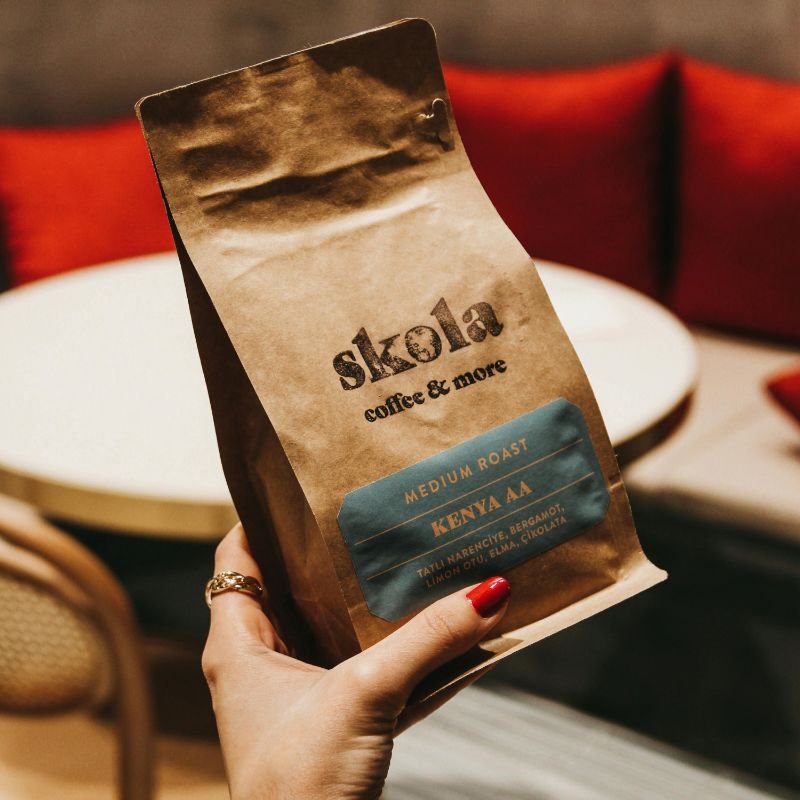
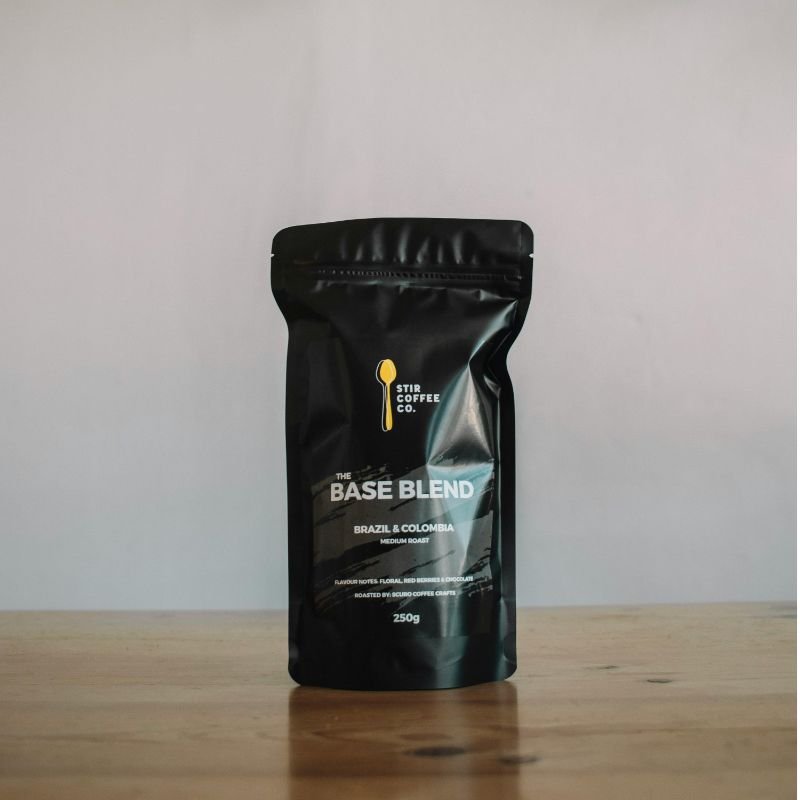
At the heart of modern food preservation are Mylar bags—highly durable storage containers crafted from layers of stretched polyethylene terephthalate (PET) and aluminum. The name “Mylar” itself signifies quality, as these bags are known for their superior ability to keep out light, air, and moisture—the three top enemies of food shelf stability.
The hallmark of Mylar bags lies in their reflective, metallic exterior. This design not only preserves food’s nutritional value but also locks in flavor, ensuring your freeze-dried meals taste just as fresh years later as when you first stored them.
How to Use Mylar Bags?

Using Mylar bags effectively is a precise yet straightforward process. Here’s how to store freeze-dried food in Mylar bags:
Select the Right Bag
Choose a bag suited to the quantity of food you’re storing. Common sizes range from pint-sized bags (perfect for small portions) to 5-gallon bags for larger food stocks. Make sure the bag is high-quality and thick enough, ideally 5 mil or higher.
Add Oxygen Absorbers
Oxygen is the primary culprit behind food spoilage. Adding oxygen absorbers inside Mylar bags ensures the environment remains oxygen-free, preventing the growth of bacteria, mold, and spoilage over time.
Seal the Bag
Use a heat sealer or a flat iron to close the bag tightly. The heat creates an airtight seal, locking out light, air, and moisture. Be sure to inspect the edges and ensure there are no gaps.
Label Your Bags
Always label your Mylar bags with the contents and storage date. This step makes it easy to rotate and manage your inventory.
What Are The Benefits of Mylar Bags?
Mylar bags are trusted for long-term food storage, particularly among preppers and survivalists. Here’s why:
Exceptional Barrier Against Air and Light
Mylar’s multi-layered design effectively prevents light from degrading nutrients in your food and creates an oxygen-free environment ideal for extended storage.
Durability for the Long Haul
Mylar bags can last for decades when stored correctly, making them ideal for stockpiling freeze-dried food for emergencies.
Great for Bulk Storage
Mylar bags are perfect for long-term, large-volume storage of freeze-dried staples like rice, beans, and fruits.
Sustainable and Reusable
Many Mylar bags can be carefully opened and resealed, reducing waste and encouraging sustainable practices.
What Is Vacuum Sealing and How Does It Work?
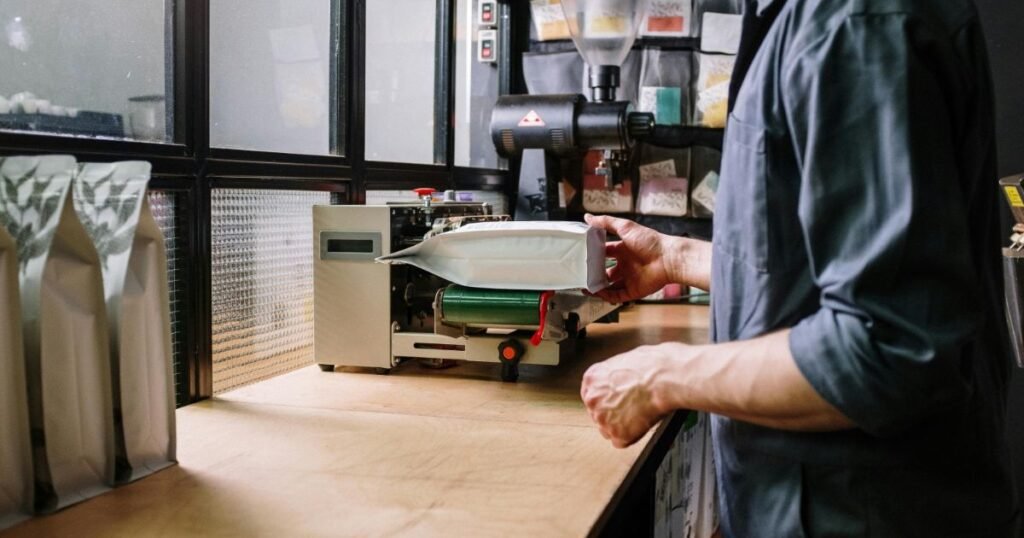
Vacuum sealing is another powerful food preservation method. This technique uses specialized vacuum sealers that suction out all the air from a plastic storage bag before sealing it tightly shut. The absence of air slows spoilage, preserves flavor, and keeps food fresher for longer.
While vacuum sealing is widely used in households for short- to medium-term storage, it’s also becoming a trusted method for niche applications like freeze-dried food.
How to Vacuum Seal?
Here’s a simple guide to vacuum-sealing freeze-dried food:
Prepare Your Food
Ensure your food is dry and ready to store. Freeze-dried food is ideal because it contains no moisture that could compromise the seal.
Fill the Vacuum Bag
Place your food in appropriate vacuum-seal bags. Opt for high-quality, BPA-free bags that are designed for long-term use.
Vacuum and Seal
Use a vacuum sealer machine, which removes air and heat-seals the bag simultaneously. Inspect the seal to ensure it’s tight and consistent.
Store Properly
Store your sealed bags in a cool, dark place to extend their shelf life.
What Is The Benefits of Vacuum Sealing?

Vacuum sealing has its own set of advantages for freeze-dried food enthusiasts:
Compact Storage
Vacuum sealing minimizes bulk by removing all air from the bag, allowing you to maximize your pantry or freezer space.
Instant Protection
A vacuum-sealed bag creates an airtight barrier, slowing down oxidation and keeping food fresher for months or even years.
Enhanced Convenience
Vacuum-sealed portions make it easy to grab, cook, or share without repackaging.
Cost-Effective
Vacuum sealers and the required bags are relatively affordable, making them accessible for beginner preppers and everyday use susceptible.
Mylar Bags vs. Vacuum Sealing for Freeze-Dried food
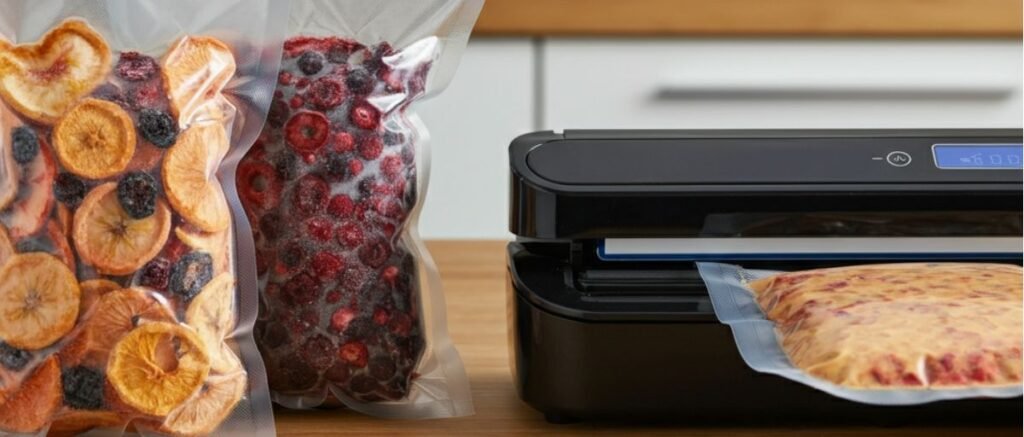
Now that we’ve explored the mechanics and benefits of Mylar bags and vacuum sealing, it’s time to address the question on everyone’s mind: Which is better for freeze-dried food?
Longevity and Light Protection
- Mylar bags reign supreme when it comes to long-term preservation, often lasting decades without compromising quality. Additionally, their opaque design prevents light from degrading nutrients.
- Vacuum sealing, on the other hand, may not keep food safe as long due to its susceptible to punctures and exposure to light if stored improperly.
Winner: Mylar Bags
Flexibility and Convenience
- Vacuum-sealed bags are the clear winner for convenience. Their compact design and pre-portioned servings make them ideal for everyday use.
- Mylar bags, while excellent for bulk storage, may not be as user-friendly for frequent, on-the-go access.
Winner: Vacuum Sealing
Cost and Accessibility
- While Mylar bags offer unparalleled quality, they require additional tools (like heat-sealers and oxygen absorbers), which can add to the cost.
- Vacuum sealing offers an affordable entry point with easy-to-use home machines.
Winner: Vacuum Sealing (for budget-conscious users)
Best Overall for Freeze-Dried Food
Mylar bags remain the gold standard if the goal is to store freeze-dried food for long-term emergencies.
But for short-term storage or daily use, vacuum sealing is a worthy contender.
Choosing the Right Method for You

Choosing between Mylar bags and vacuum sealing largely depends on your unique needs. If you’re a prepper focused on longevity, reliability, and ultimate food quality, Mylar bags are your go-to. But if you’re a food enthusiast seeking convenience and shorter-term storage, vacuum sealing steps in as a practical ally.
Both methods can work in tandem—use Mylar for long-term storage and vacuum sealing for mid-term or everyday needs.
By understanding the strengths and limitations of each, you can tailor your food preservation strategy to enjoy better-tasting, longer-lasting freeze-dried food.
Happy preserving!
FAQ
Mylar bags are not ideal for freezing as they lack the flexibility and durability needed for freezing temperatures. Vacuum-sealed bags are a better option for freezer storage.
Yes, Mylar bags require a heat sealer to ensure an airtight seal. Some people use household irons or hair straighteners as a DIY alternative.
Vacuum-sealed food typically lasts 1-3 years in the freezer, depending on the type of food. This is much longer than food stored in traditional plastic bags or containers.
Yes, Mylar bags can be reused if they are not damaged. Simply cut them open, clean them, and reseal with a heat sealer.
Mylar bags are better for emergency preparedness because they provide a longer shelf life and superior protection against environmental factors.
